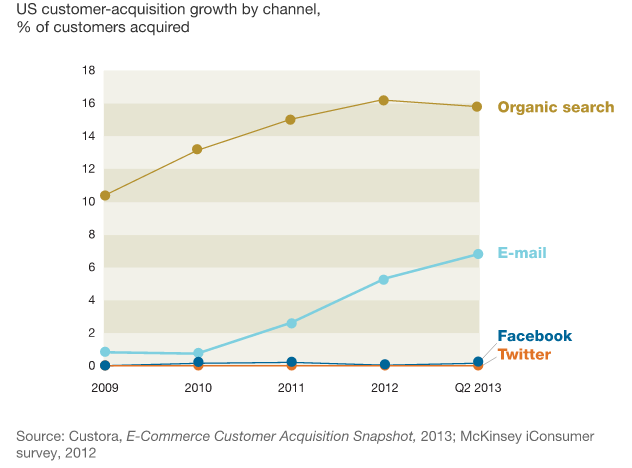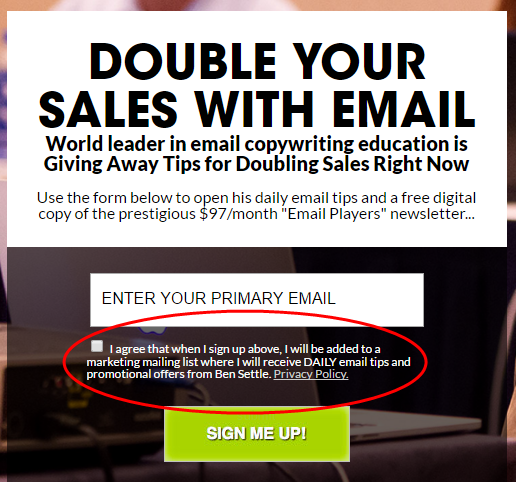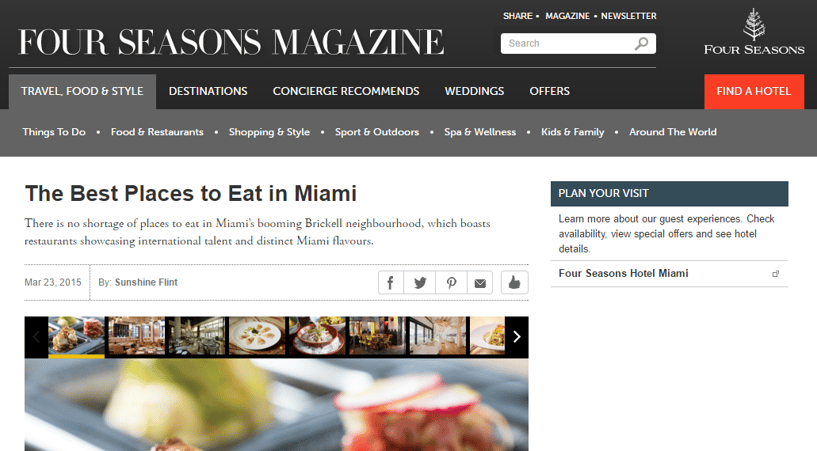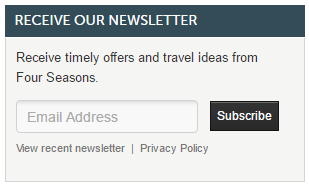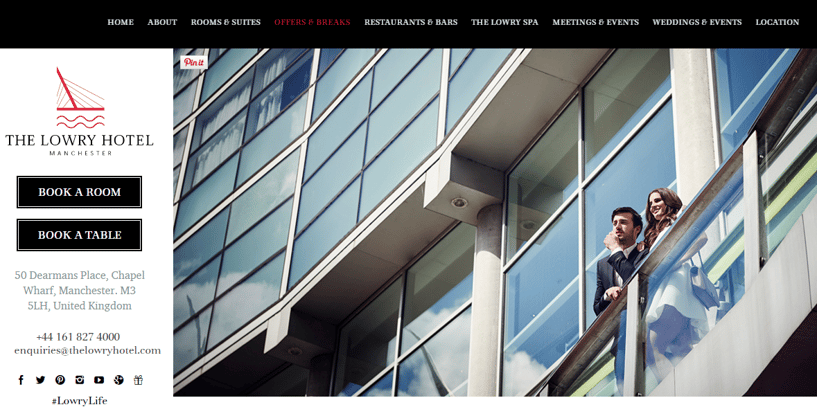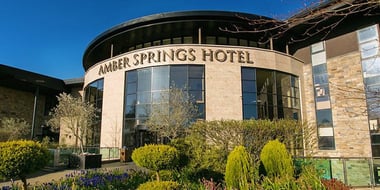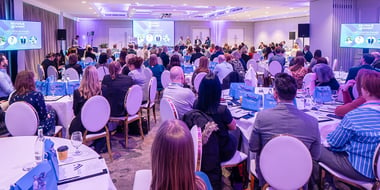Email marketing is a much more personal way to communicate with your guests than ads, and it gets serious results. We’ve put together a guide to help you:
- build a strong email list
- create emails that drive bookings
- build long-term guest relationships
When hotels get started with digital marketing, often the first thing they look at is social media. There’s a current wave of interest in networks like Facebook, Instagram and Pinterest, and the benefits hoteliers can reap. They praise the 2.3 billion users and the $23.68 billion businesses have spent running social media ads – these are impressive numbers, and hotels do get results from properly run social campaigns.
These stats spur hotels to create brand pages, start posting stuff, run ads and drive traffic. Without a proper website funnel, however, that traffic won’t convert to the high numbers of bookings you’re looking for.
This is because the website’s funnel isn’t set up properly. Your hotel’s funnel chiefly comprises of:
- Your offering (rooms, services and facilities)
- Landing pages
- Emails
Search engines and social media drive traffic (organic and paid), the landing pages capture the leads and email nurtures these leads in a private environment and sells to them when the time is right.
You need to ensure you set up a funnel before you begin driving traffic with social media.
Here’s one of our latest guides on landing pages. Today, we’re going to talk about emails.
Email plays an integral part in your funnel. It’s a much more personal way to reach out than social media, and there are also billions of users. By the end of this year, it is projected that there will be 4.3 billion users.
Email is nearly 40 times more effective than Facebook and Twitter together in the acquisition of customers. It’s targeted towards people who already want what you have, and email is also under your control. Social networks are evolving rapidly, but the basics of email remain consistent, even as methods for sending them become more sophisticated.
Let’s take a look at those “basics” – sometimes, they’re all you need to build a strategy that will bring guests through the door.
Tell People What They’re Getting:
Telling people what you’re giving them seems obvious, but the clarity of your message can get lost when you try to be too creative.
While getting subscribers for your hotel newsletter through entries to a competition or on your booking engine, it can be tempting to avoid words like ‘Subscribe’ or ‘Sign up’. They can hurt conversion rates, and we all know how tired you can get of being told to sign up to things.
Instead, you might use words like ‘Download Now!’, because those words work. They get results. In fact, they can get 3 times more sign-ups.
When you send the welcome email, you might be tempted continue the trend and keep words related to subscribe and sign up at bay. As a result, some email marketers also avoid informing people that they have subscribed to their newsletter. Instead, they only provide the information on the competition or the activity that led them to sign up.
However, when you don’t tell someone what they’re signing up for, your email list will be based on quantity, not quality.
If someone doesn’t know they have signed up for a newsletter, they might feel a little upset when they start getting them. Some of your brand-new subscribers will accept it, but some won’t – they’ll click the unsubscribe button, ignore you, or even report your email as spam.
Not only will you be getting signups who aren’t likely to book a stay at your hotel any time soon, you’ll also be driving down your emails’ deliverability score. That’s like a credit score for your emails. If they’re rejected, unopened or marked as spam too often, email providers will be more likely to put them straight into junk.
So, what’s the best way to be straightforward?
You can either tell people they’re signing up in the microcopy below your signup box, or by sending new signups a thank you email telling them that they signed up to your newsletter or updates.
Tell them how often you’ll be sending, and give them a rough idea of what they’ll include. Will you be sending them news about your hotel or local events? Seasonal offers or exclusive vouchers?
When people who actually want your emails sign up to get them, your open rates and click rates will shoot up.
Be as Relevant as Humanly Possible
Your email list will have many types of potential hotel guests. These include individual travelers, family travelers, friends traveling together, business travelers, corporate accounts – the list goes on.
If you write your emails for all of them at once, your engagement and conversion rates will be low and you’ll lose a lot of valuable subscribers. Instead, create different emails that will interest these different types of people and send it to them separately.
To write relevant emails, the first things you need are customer personas. You can learn more about how to create these by reading this post. After you have a few customer personas to work from, writing a message that caters to your ideal guest should flow naturally.
You can actually email the same tips and offers to all of them, but the angle you use should be something that relates with them on an emotional level. Creating empathy maps can help you with this.
For instance, both business travelers and those looking for a quick getaway might be interested in a midweek deal, but they would be interested for very different reasons.
So how do you ensure that the messages you send is only received by your target audience?
List Segmentation
Instead of placing all your subscribers on one big list, you place them on several smaller ones. Each should contain a different audience type. How do you find out which type of customer someone is? When they sign up for the newsletter, try to get some additional information, like their age (consider asking for their birthday) or reasons for travelling. Asking too many questions discourages people from signing up, though, so don’t overwhelm your guests.
Tag Your Subscribers
You can ‘tag’ your subscribers automatically by sending your subscribers to different landing pages and getting them to sign up for different lead magnets that will interest them. If someone signs up for a family break, you can have your email provider automatically put them in the ‘with kids’ segment of your mailing list.
To segment like this automatically, you need an email provider capable of doing that. There are more than a few solid ones that do this for very reasonable costs – one place to start looking might be GetResponse. You can tag people or move them to lists based on the action they take, like clicking a link or visiting a page.
Once you’ve segmented your subscribers, you’ll be able to send them the right messages at the right time.
For example, let’s say I am looking for a hotel and I browse through the Four Seasons Blog.
I like what I see, so I sign up to their newsletter.
Once I sign up, the only thing Four Seasons knows about me is that I like eating out and I am interested in travelling to Miami, because I was reading the post on the best places to eat in Miami. They don’t know if I plan to travel on my own, with a family, with my friends or anything else. However, they can figure this out if they use a sophisticated email tool.
They could send links to different offers or blog posts, and my interests will be tagged depending on which links I click. For example, if I click on a link that says ‘The Best Things to do with Friends in Miami,’ it shows that I’m interested in travelling with friends. That lets Four Seasons send me more relevant tips and offers.
Relationships Are the Future of Guest Interaction
The internet is drowning with marketing messages. So is your email inbox. If you check it right now, you’ll notice most of the emails are trying to sell something.
Too many email strategies are based on constantly pressure to buy, without any focus on building a relationship.
You need to differentiate yourself from these people by building a relationship with your guests. Once you have a rapport with guests, you can send them marketing emails that give them deals and offers. They will be more likely to purchase from you over a competitor, because they trust you.
Design Is Hugely Important
Message match is a huge factor for building conversions.
Rand Fishkin, the Wizard of Moz, explains in the video below why it’s so important that the ads you use to promote your landing page look similar to the landing page they lead to.
Message match keeps guests from dropping off at various points of the booking funnel, because visitors will follow the message from the ad to the landing page. If your messages don’t match, it could confuse visitors.
You can learn more about message match here.
The same thing applies to email ads. The ads in your emails should look very similar to the page they lead to. As hotel pages and landing pages are very picturesque, you will need to make your ad picturesque as well by adding the same photos, design patterns and colours.
If you use animation, make sure it matches the message too. Keep it simple: animation should complement the ad, not drive attention away from the message you are trying to communicate.
The above screenshot is the offers page of The Lowry Hotel, Manchester.
While driving traffic to this page, your email you should have strong message match. You’ll need to ensure that your email’s design very similar to your offer page. The email should contain the same photo and similar design. For the Lowry, they should be using the colours white, black and red. You will also need to add call to action buttons that look just like the ones on that page.
Following all the above tips will ensure that you write highly effective emails to market your hotel. They will ensure that your emails do what they are meant to: increase your revenue.
How do you use emails to promote your hotels? Any important email marketing tips you would like to share with us? Please leave your comments below.

